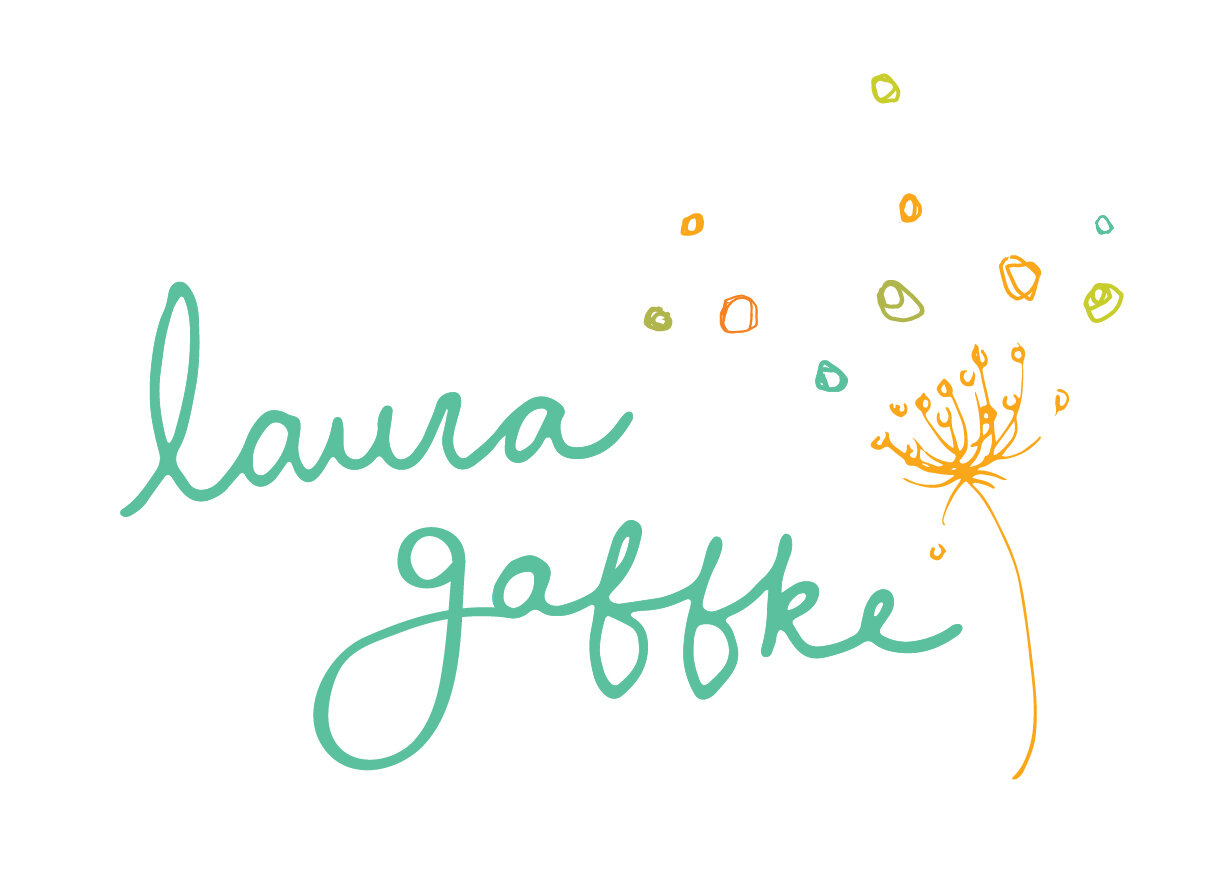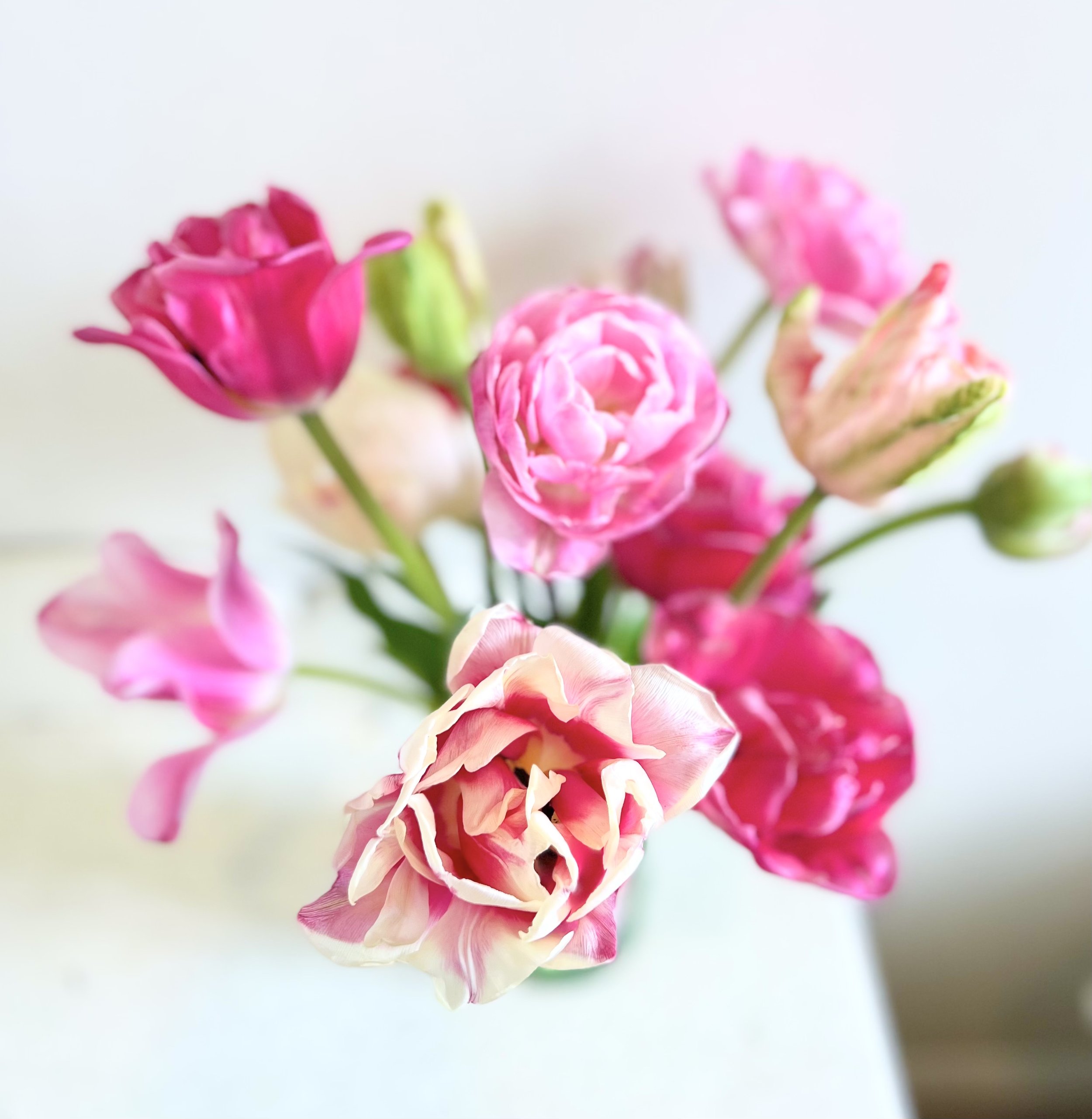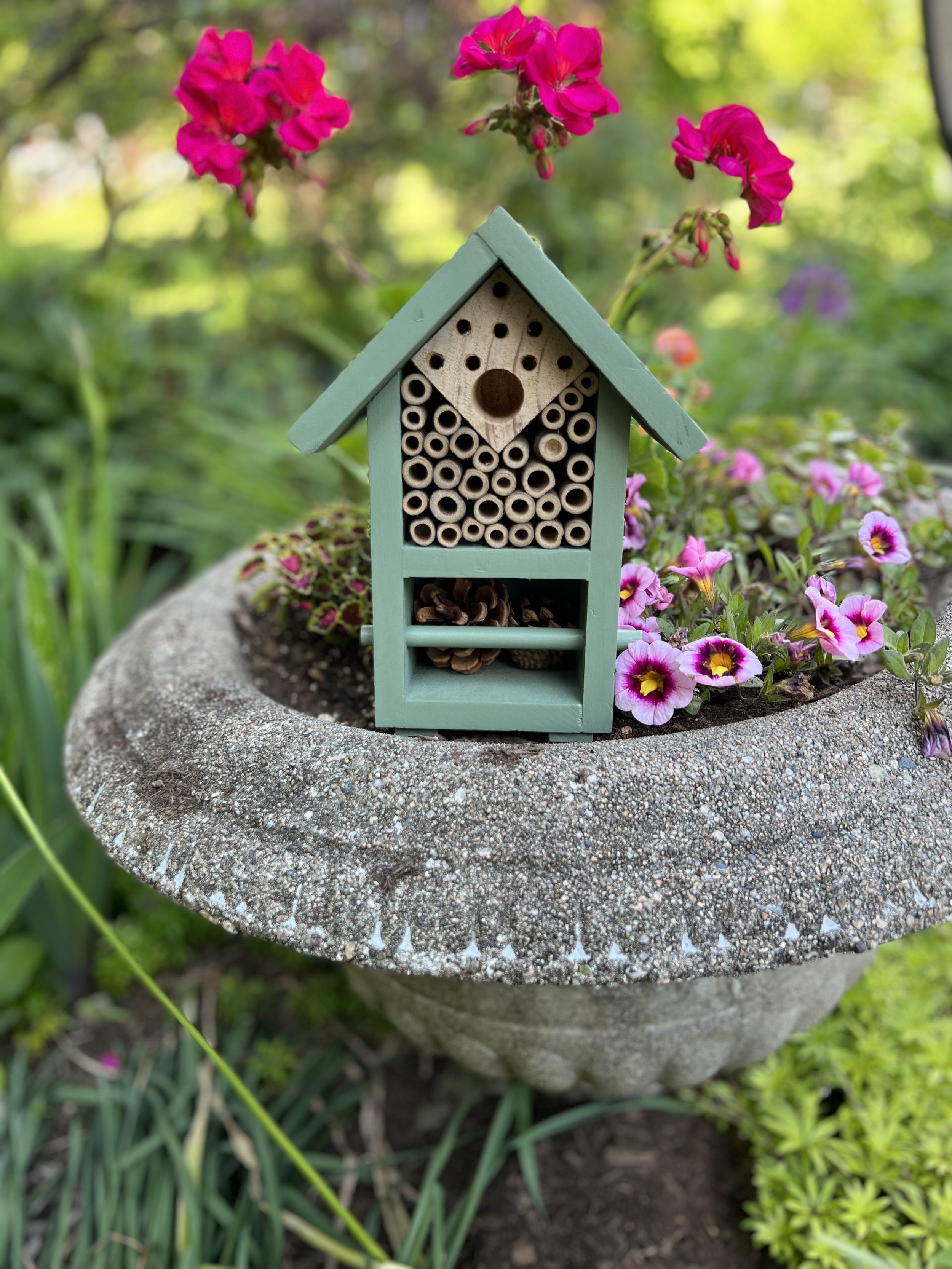Spring Blooms & Helpful Tips for a Beautiful Garden
Are you enjoying all the spring blooms? I can hardly contain the excitement and energy I feel in my heart when I go out to my garden and drive around town!
It's been a little breezy here on the shoreline this past month but it's starting to warm up and I've been filling my time with lots of painting, my annual trip to the Brimfield Antique Show, a wonderful Artist Date to a tulip farm, plant sales, and many visits to my local garden centers.
My flower pots are filled, the back deck is open and my garden is starting to come fully alive with color which makes my heart sing.
The tulips and daffodils have made way for the lilacs but I savored their beauty with my camera and the flower posies I created.
It's the beautiful time of year when I feel Mother Nature working her magic so gloriously.
The birds are building their nests and I'm enjoying the bees flittering about in the garden. I have several birdhouses in my garden and this year I decided to add a bee 🐝 house.
From what I've learned, similar to birdhouses, bee houses are meant to increase the pollination of your garden plants.
With bees being endangered, nature, ecosystems, and our food supply are at risk so I'm always looking for ways to help encourage them. By helping them you enjoy more and better flowers, fruits, and vegetables.
Sounds like a win-win to me!
If you have a garden, or you’re looking to plant one, here are a few tips to encourage pollinators (birds, bees, and butterflies) to your garden.
9 TIPS for Attracting Bees & Other Pollinators to Your Garden
CHOOSE TO GROW POLLINATOR-FRIENDLY PLANTS
Flowers like coneflowers, cosmos, zinnia, lavender, or sunflowers are great. Flowers provide a food source for most pollinators. Planting a diverse range of flowers or flowering trees and shrubs will provide a variety of nectar and pollen for different pollinators. Some, like bees, will come to collect the pollen and others such as birds and butterflies will be trying to harvest the nectar. In doing this, they will transfer pollen on their legs and bodies to different flowers. Some plants are pollinated more efficiently by specific pollinators.
USE LOCAL NATIVE PLANTS
They are more attractive to native bees than exotic flowers and are usually well adapted to your growing conditions. I get a lot of mine at plant sales from the local garden clubs.
CHOOSE SEVERAL COLORS OF FLOWERS
Bees have good vision to help them find flowers and the nectar and pollen they offer. Flower colors that particularly attract bees are blue, purple, violet, white, and yellow. I plant lots of fuchsia and orange and find they love those as well. My favorite flowers are zinnias. To attract a diverse range of pollinators, it is essential to have a diversity of flowers in different colors.
WATER IS ESSENTIAL
You can get thirsty buzzing about all day! Having water available, especially in the warmer months, will help pollinators to survive and thrive! Watering your garden early in the morning is not only great for your plants as it allows them time to absorb the water but will also leave little pockets and droplets of water for the pollinators.
TRY TO AVOID USING PESTICIDES
Growing these plants organically will have bees flocking toward your garden, and it’ll help keep their life cycle going which keeps us going. If you must use a pesticide, start with the least toxic one and follow the instructions to the letter.
HAVE A DIVERSITY OF PLANTS FOR ALL SEASONS
By having a sequence of plants flowering through spring, summer, and fall, you can support a range of bee species that fly at different times of the season.
PLANT A BEE HOUSE WHERE BEES WILL VISIT
Bees prefer sunny spots over shade and need some shelter from strong winds.
SUPPORT LOCAL BEE KEEPERS
By purchasing organic honey which is lovely in tea and good for sore throats. Local bee farms prioritize nurturing bee populations so hopefully, the bees will be happily buzzing again soon.
OBSERVE
Take the time to slow down and observe your garden, and you will start to recognize which flowers are attracting beneficial insects. I like to have my morning coffee or lunch in the garden and just spend time observing without any distractions. We are often so busy trying to do something that we lose sight of all the beautiful little things going on.
"Safe Haven." was inspired by the energy and joy that Mother Nature gives so freely. It reminds me to always find ways to honor, advocate for, and protect her.
Happy gardening!
Sending you the biggest bouquet of the happiest colored tulips to brighten your day!
💞Laura
p.s. I’ve included two videos below I think you will like.
*The first video is by a favorite artist of mine, Louie Schwartzberg who made this AMAZINGLY beautiful, meditative time-lapse video of flowers and nature I think you will LOVE💞! His message is simple and lovely and his cinematography is unbelievably magical and poetic.
*The second video is a 2-minute video that explains why the bees are so important.
ENJOY!
Read More Posts…









A love letter to the earth. Celebrating Life’s Beauty. Lots of inspiration + Studio News